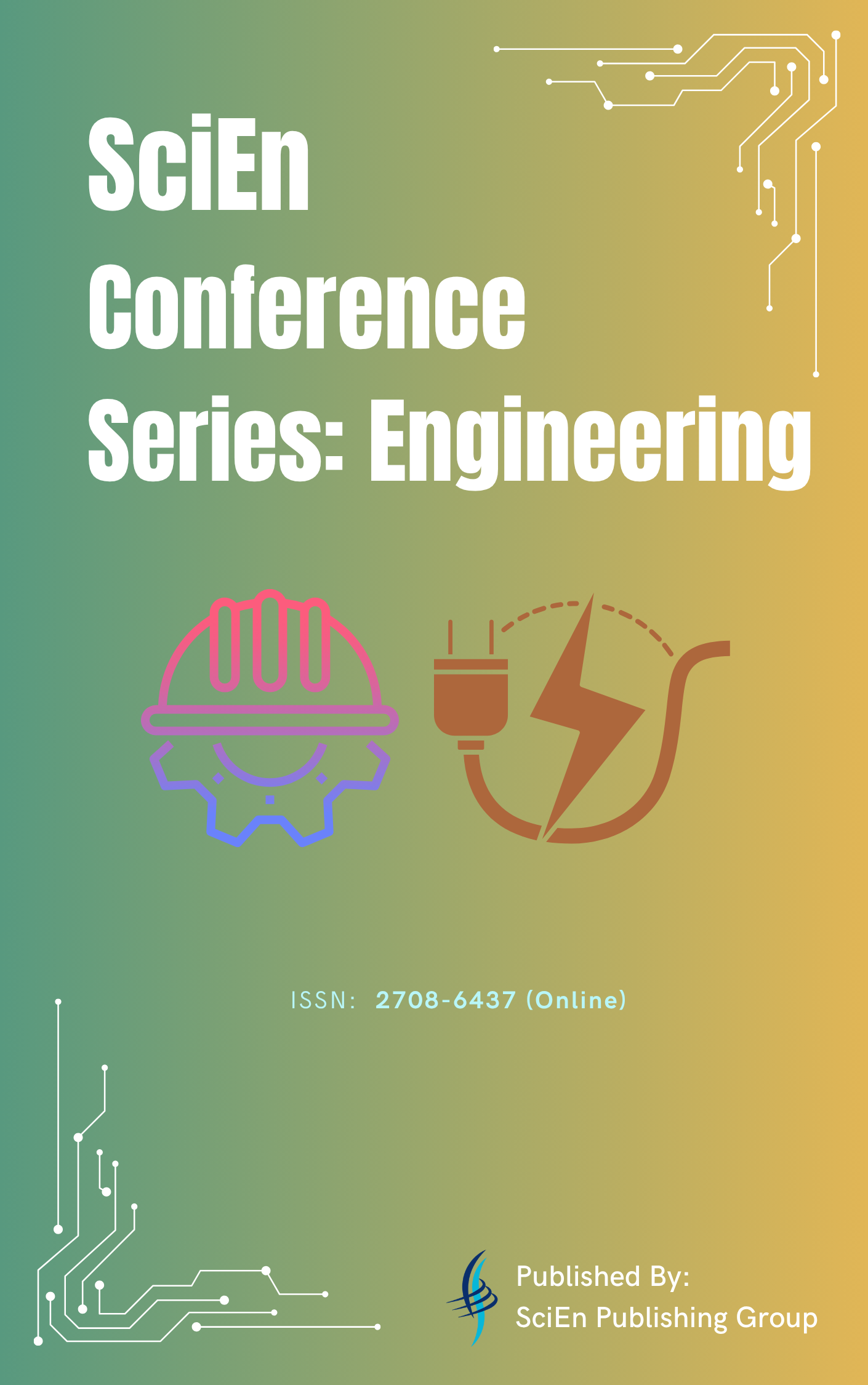Heat Transfer Performance and Flow Dynamics of Al2O3/Water Nanofluid in Turbulent Regime
DOI:
https://doi.org/10.38032/jea.2024.02.004Keywords:
Nanofluid, Heat Transfer, Al2O3/Water, Thermal Performance FactorAbstract
Rapid heat transfer is one of the major concerns in the growing engineering disciplines. Nanofluid has added a new dimension to rapid heat transfer because of its improved thermophysical properties. In this current investigation, investigation was carried out for 0.1% and 0.2% Al2O3/Water nanofluid in turbulent flow. Constant heat flux was supplied in the test section tube with the help of nichrome resistance wire which was spirally winded uniformly on the test section tube. The investigation reveals that the heat transfer coefficient and dimensionless Nusselt number enhance for Al2O3/water nanofluid than water as the working fluid. Heat transfer coefficient also improves with the increase in volume fraction of nanoparticles though the stability of nanofluid decreases. Nusselt number increases by 33.46% for 0.1% Al2O3/water nanofluid compared to water. Conversely, the Nusselt number increases by 57.01% for 0.2% Al2O3/water nanofluid compared to water. A higher thermal performance factor was found for a higher volume fraction of nanoparticles. Friction factor and pumping power per unit length also increase with the increase in the volume fraction of nanoparticles. It was concluded that Al2O3/water nanofluid with a higher volume fraction of nanoparticles gives a higher heat transfer rate for the same pumping power per unit length than water as a working fluid.
References
Yu, W., France, D.M., Choi, S.U. and Routbort, J.L., 2007. Review and assessment of nanofluid technology for transportation and other applications (No. ANL/ESD/07-9). Argonne National Lab.(ANL), Argonne, IL (United States).
Chakraborty, S., Sarkar, I., Behera, D.K., Pal, S.K. and Chakraborty, S., 2017. Experimental investigation on the effect of dispersant addition on thermal and rheological characteristics of TiO2 nanofluid. Powder Technology, 307, pp.10-24. DOI: https://doi.org/10.1016/j.powtec.2016.11.016
Chavda, N.K., Jani, J.P., Patel, A.K., Zala, K.P. and Nimbark, N.G., 2014. Effect of nanofluid on friction factor of pipe and pipe fittings: Part I-effect of aluminum oxide nanofluid. International Journal of Current Engineering and Technology, 4(6), pp.4069-4074.
Duangthongsuk, W. and Wongwises, S., 2010. An experimental study on the heat transfer performance and pressure drop of TiO2-water nanofluids flowing under a turbulent flow regime. International Journal of Heat and Mass Transfer, 53(1-3), pp.334-344. DOI: https://doi.org/10.1016/j.ijheatmasstransfer.2009.09.024
Leong, K.Y., Saidur, R., Kazi, S.N. and Mamun, A.H., 2010. Performance investigation of an automotive car radiator operated with nanofluid-based coolants (nanofluid as a coolant in a radiator). Applied Thermal Engineering, 30(17-18), pp.2685-2692. DOI: https://doi.org/10.1016/j.applthermaleng.2010.07.019
Naraki, M., Peyghambarzadeh, S.M., Hashemabadi, S.H. and Vermahmoudi, Y., 2013. Parametric study of overall heat transfer coefficient of CuO/water nanofluids in a car radiator. International Journal of Thermal Sciences, 66, pp.82-90. DOI: https://doi.org/10.1016/j.ijthermalsci.2012.11.013
Zhang, Z., Xue, Q. and Zhang, J., 1997. Synthesis, structure and lubricating properties of dialkyldithiophosphate-modified Mo S compound nanoclusters. Wear, 209(1-2), pp.8-12. DOI: https://doi.org/10.1016/S0043-1648(96)07288-2
Anoop, K., Sadr, R., Al-Jubouri, M. and Amani, M., 2014. Rheology of mineral oil-SiO2 nanofluids at high pressure and high temperatures. International Journal of Thermal Sciences, 77, pp.108-115. DOI: https://doi.org/10.1016/j.ijthermalsci.2013.10.016
El-Maghlany, W.M., Hanafy, A.A., Hassan, A.A. and El-Magid, M.A., 2016. Experimental study of Cu–water nanofluid heat transfer and pressure drop in a horizontal double-tube heat exchanger. Experimental Thermal and Fluid Science, 78, pp.100-111. DOI: https://doi.org/10.1016/j.expthermflusci.2016.05.015
Momin, G.G., 2013. Experimental investigation of mixed convection with water-Al2O3 & hybrid nanofluid in inclined tube for laminar flow. Int. J. Sci. Technol. Res, 2(12), pp.195-202.
Huang, D., Wu, Z. and Sunden, B., 2016. Effects of hybrid nanofluid mixture in plate heat exchangers. Experimental Thermal and Fluid Science, 72, pp.190-196. DOI: https://doi.org/10.1016/j.expthermflusci.2015.11.009
Gürbüz, E.Y., Variyenli, H.İ., Sözen, A., Khanlari, A. and Ökten, M., 2021. Experimental and numerical analysis on using CuO-Al2O3/water hybrid nanofluid in a U-type tubular heat exchanger. International Journal of Numerical Methods for Heat & Fluid Flow, 31(1), pp.519-540. DOI: https://doi.org/10.1108/HFF-04-2020-0195
Heris, S.Z., Shokrgozar, M., Poorpharhang, S., Shanbedi, M. and Noie, S.H., 2014. Experimental study of heat transfer of a car radiator with CuO/ethylene glycol-water as a coolant. Journal of Dispersion Science and Technology, 35(5), pp.677-684. DOI: https://doi.org/10.1080/01932691.2013.805301
Togun, H., Homod, R.Z., Yaseen, Z.M., Abed, A.M., Dhabab, J.M., Ibrahem, R.K., Dhahbi, S., Rashidi, M.M., Ahmadi, G., Yaïci, W. and Mahdi, J.M., 2022. Efficient heat transfer augmentation in channels with semicircle ribs and hybrid Al2O3-Cu/water nanofluids. Nanomaterials, 12(15), p.2720. DOI: https://doi.org/10.3390/nano12152720
Wollele, M.B., HV, H. and Assaye, M., 2022. Heat transfer augmentation of Al2O3-Cu/water hybrid nanofluid in circular duct with inserts. Cogent Engineering, 9(1), p.2146627. DOI: https://doi.org/10.1080/23311916.2022.2146627
Sen, G. and Inam, M.I., 2021. Numerical Analysis of Natural Convection Heat Transfer Inside an Inverted T-Shaped Cavity Filled with Nanofluid. Journal of Engineering Advancements, 2(04), pp.180-188. DOI: https://doi.org/10.38032/jea.2021.04.003
Mahmud, M.S. and Rijvi, F.R., 2022. Enhancing the Thermal Performance of Radiators using Nanofluids-A CFD Approach. Journal of Engineering Advancements, 3(02), pp.57-63. DOI: https://doi.org/10.38032/jea.2022.02.003
Alam, T. and Inam, M.I., 2021. Heat Transfer Characteristics Analysis of a Nanofluid in a Tube with a Co-axial Twisted Tape Inserter: A Numerical Approach. Journal of Engineering Advancements, 2(03), pp.132-147. DOI: https://doi.org/10.38032/jea.2021.03.003
Downloads
Published
Issue
Section
License
Copyright (c) 2024 Abu Raihan Ibna Ali, Tafsirul Hassan, Bodius Salam, Tania Akter

This work is licensed under a Creative Commons Attribution-NonCommercial 4.0 International License.
All the articles published by this journal are licensed under a Creative Commons Attribution-NonCommercial 4.0 International License

